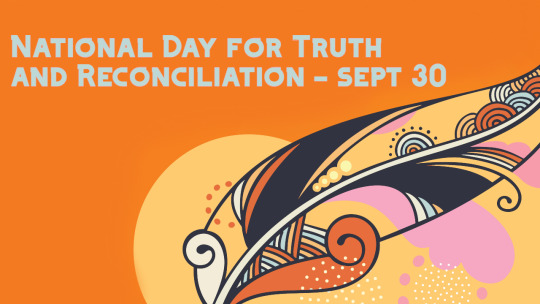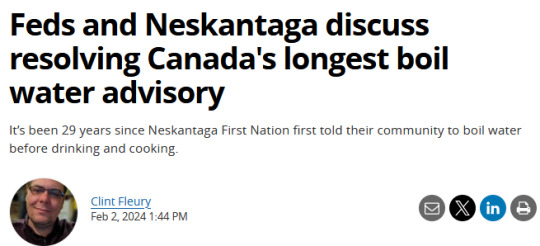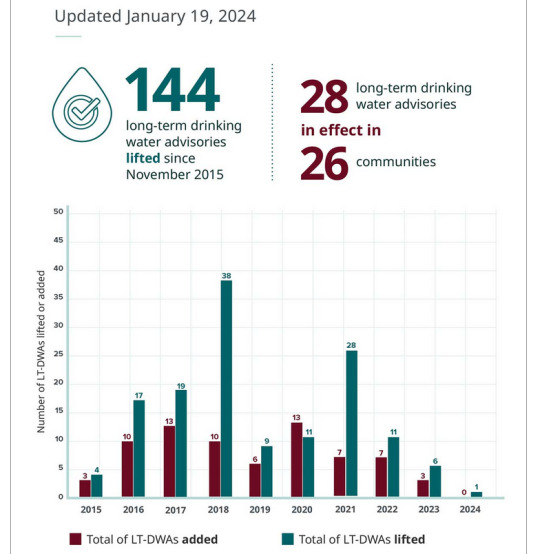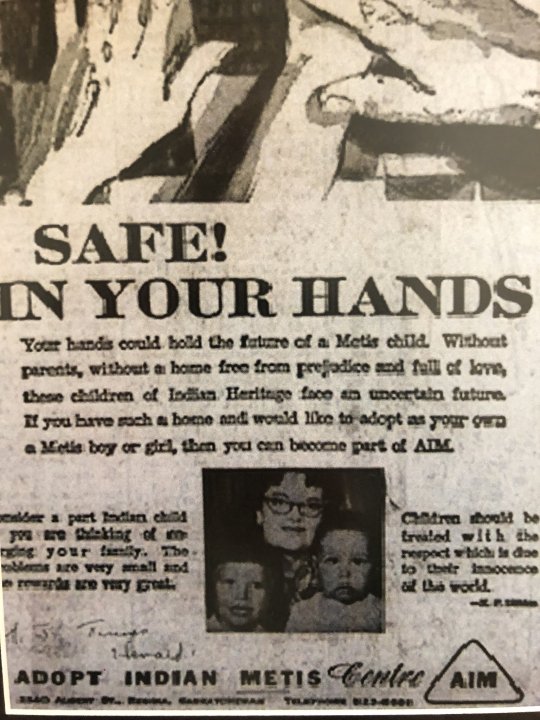#canadian first nations
Explore tagged Tumblr posts
Text


Normally the settlement of claims to property are something the court system takes very seriously. The very foundation of capitalism after all is that some person can claim ownership of a piece of land, and through that ownership charge others rent to use it.
Or that ownership of machinery can be used to take most of the value of what the workers using the machines produce to sell for profit. Obviously such a system depends on the courts and the threat of violence to prevent those actually doing the work or living on the land telling the ‘owner’ to get lost.
The major exception is when those with the legal claims are from the First Nations, in particular when the claim is one of collective ownership by a community to the land. Then rather than usual pattern of careful investigation and prompt decisions we see the most absurd ‘sales’ treated as valid, legal documents all but torn up and legal processes drawn out for decades without conclusion. Meanwhile the courts are used to suppress the protests of those who appear to have the best legal claim to ownership.
In 1995 Tyendinaga Mohawks submitted an official land claim which included the gravel quarry worked by Thurlow Aggregates. It took till 2003 for the claim to be acknowledged as legitimate by the Canadian government. Yet this did not halt the quarrying, the Ontario government continued to renew the license to Thurlow and thousands of truckloads of gravel continued to leave.
Another occupation began February 2006 when members of Six Nations reclaimed the Douglas Creek Estates bordering Caledonia. Their claim is based on the fact that the so called agreement where they were said to have surrendered this land was obviously invalid. Yet far from waiting on the sidelines until the courts resolved this the police in April moved in to evict them.
So why don’t the Canadian courts jump to the defense of indigenous property rights in the manner they would if workers occupied a factory or tenants refused to pay rent to a landlord?
Fundamentally they face the problem that courts all over the Americas face. Capitalism in the Americas was built out of a massive theft where the existence of the indigenous populations who were living on the land was not even recognized. Indigenous nations that tried to defend their usage were murdered. Many were enslaved in the mines and the estates of the new owners. Across the America’s any legal system that recognized the de facto claim to the land by those who had been living on it would undermine the base of North American capitalism.
Historic conditions in Canada meant that here more than elsewhere the colonial power was forced to concede some recognition that there were people already living on the land. Legal treaties recognizing this are thus more common and of quite recent origin. Yet at the same time a significant wing of capitalism in Canada makes it profits from the massive extraction of resources from the land covered by such treaties.
A speedy and fair resolution of the land disputes would be a major problem for these corporations and the courts and government know this. This is why last August Canada was one of only four countries to vote against a UN declaration on indigenous rights.
#first nations#canadian first nations#property law#canadian government#first nations in canada#indigenous#community building#practical anarchy#practical anarchism#anarchist society#practical#revolution#anarchism#daily posts#communism#anti capitalist#anti capitalism#late stage capitalism#organization#grassroots#grass roots#anarchists#libraries#leftism#social issues#economy#economics#climate change#climate crisis#climate
2 notes
·
View notes
Text
"In a historic “first-of-its-kind” agreement the government of British Colombia has acknowledged the aboriginal ownership of 200 islands off the west coast of Canada.
The owners are the Haida nation, and rather than the Canadian government giving something to a First Nation, the agreement admits that the “Xhaaidlagha Gwaayaai” or the “islands at the end of world,” always belonged to them, a subtle yet powerful difference in the wording of First Nations negotiating.
BC Premier David Eby called the treaty “long overdue” and once signed, will clear the way for half a million hectares (1.3 million acres) of land to be managed by the Haida.
Postal service, shipping lanes, school and community services, private property rights, and local government jurisdiction, will all be unaffected by the agreement, which will essentially outline that the Haida decide what to do with the 200 or so islands and islets.
“We could be facing each other in a courtroom, we could have been fighting each other for years and years, but we chose a different path,” said Minister of Indigenous Relations of BC, Murray Rankin at the signing ceremony, who added that it took creativity and courage to “create a better world for our children.”
Indeed, making the agreement outside the courts of the formal treaty process reflects a vastly different way of negotiating than has been the norm for Canada.
“This agreement won’t only raise all boats here on Haida Gwaii – increase opportunity and prosperity for the Haida people and for the whole community and for the whole province – but it will also be an example and another way for nations – not just in British Columbia, but right across Canada – to have their title recognized,” said Eby.
In other words, by deciding this outside court, Eby and the province of BC hope to set a new standard for how such land title agreements are struck."
-via Good News Network, April 18, 2024
#canada#indigenous#first nations#haida#british columbia#canadian politics#land back#indigenous peoples#indigenous rights#indigenous land
18K notes
·
View notes
Text
Indigenous peoples continue to struggle to access complete and timely records about Indian Residential Schools, according to a new report by the Senate standing committee on Indigenous Peoples. The report, Missing Records, Missing Children, was released Thursday and includes 11 recommendations to improve access to residential school records, including for the Canadian government to compel Catholic entities to release documents to the National Centre for Truth and Reconciliation. "It's extremely important for the support of the survivors and the family members to bring closure because everyone is aging on," said Sen. Brian Francis, who is Mi'kmaw from Lennox Island First Nation and is chair of the committee. "The sooner we can get answers the better."
Continue Reading
Tagging: @newsfromstolenland
#truth and reconciliation#first nations#indigenous#residential schools#cdnpoli#canada#canadian politics#canadian news#canadian
4K notes
·
View notes
Text

Also the first First Nations Premier in Canada!
0 notes
Text

Levi Qumaluk (Inuit; Nunavik, 1919-1997) Untitled (Walrus), 1952 Steatite, ivory, 9.4 x 18.7 x 19.7 cm Montreal Museum of Fine Arts 1953.Aa.1
#animals in art#20th century art#Indigenous art#First Nations art#Canadian art#Montreal Museum of Fine Arts#1950s#soapstone#steatite#carving#figure#animal effigy#sculpture#walrus#Arctic animals#marine mammals#Levi Qumaluk#Inuit art
415 notes
·
View notes
Text
I know I don’t have a large following. I know this post will get lost in the sea of other posts. I know I don’t come on here often, and when I do I try to keep my page free from death and other serious topics. Yet, I think this is imperative to say, especially since I myself am of indigenous descent. I ask all of you to join me in solidarity.
Cole Brings Plenty, actor, model, and most importantly activist was found dead. He was assaulted in a club in Lawrence, Kansas. He was killed and his braids; a symbol of his heritage, of his Lakota decent, and a sacred symbol across many an indigenous nation, were forcibly cut.
I beg of thee and I plead with thee, spread the word. Do your part, however big or little, to bring light to this situation. Whether it be by reblogging this post or others alike, or by going out and making a stand. Do it.
Shed light on the situation. This goes beyond the death of one man. It is about the abuse and the destruction of natives and their communities. Of the killing of many an innocent soul. Of the brutalization of many First Nations.
We have seen time and time again, many indigenous people die by similar means. We need to bring light on the deaths of any and all indigenous individuals dead, missing or at risk. It is an epidemic, an assault, and a silent cleansing of many a nation.
Whether it be the estimated 6,000 dead at the hands of Canadian residential schools, the murdered and missing indigenous women and children, or the killing of an actor and activist, you cannot deny the sheer abhorrence of this problem. The problem of many Native American people dying, going missing and being abused, at an alarming rate. At a level unprecedented and unparalleled, at a level of which should not be kept silent.
Cole Brings Plenty, actor, model, activist.
Look at him and spread awareness for him and for many others befallen by the same fate.

Remember him. Remember all of the others. Let nobody else befall the same fate again.
#cole brings plenty#first nations#indigenous#indigenous americans#native american#Canadian residential schools#residential schools#tw death#mmiw#mmiwg2s#please join me in solidarity and spread this word as much as possible#i beg of you#colored text#long post
1K notes
·
View notes
Text

youtube
CBC video: Stolen Children | Residential School Survivors Speak Out
Since their first arrival in the “new world” of North America, a number of religious entities began the project of converting Indigenous Peoples to Christianity. This undertaking grew in structure and purpose, especially between 1831 and 1969, when the governing officials of early Canada joined with Roman Catholic, Anglican, Methodist, United, and Presbyterian churches to create and operate the residential school system. The last federally-run residential school, Gordon Indian residential School in Saskatchewan, closed in 1996. One common objective defined this period: the aggressive assimilation of Aboriginal peoples.
[ legacy of hope ]
#chromatic voice#national day for truth and reconciliation#first nations#turtle island#residential schools#every child matters#missing and murdered indigenous women#mmiwg2s#state violence#canadian content#settler terrorism#christianity as colonialism#orange shirt day
315 notes
·
View notes
Text
OH HELL YEAH!!!
This is big news guys! So many important village sites in BC have private industrial sites (purposely) built right on top of them. It's rare that these sites get returned to their proper cultural owners, and when and if they do, they're usually destroyed (Namu comes to mind).
I'm so stoked for The Tla'amin First Nation to get their villaCBCge site back! Congrats!!!
141 notes
·
View notes
Text

Alex Janvier (Canadian/First Nations, 1935-2024), Lubicon, 1988. Acrylic on canvas, 165.2 x 267 cm. Art Gallery of Alberta
266 notes
·
View notes
Text
the fact that Neskantaga is still under a boil water advisory in 2024 is driving me insane.

for context: Neskantaga First Nation is a small community in Ontario 436 km [270 miles] northeast of Thunder Bay and 180 km [111 miles] northeast of Pickle Lake. They have been under a boil water advisory since February 1995 - nearly 30 goddamned years.
Progress on a new water treatment plant has been ongoing. Neskantaga First Nation's original water treatment plant was built in 1993, but the journey for a new one has undergone numerous issues involving the government and contractors, as well as shoddy construction and hazardous spills.
Construction is still listed as underway with no ETA on the advisory being lifted.

The Canadian Government perpetually drops the ball when it comes to safe water on reserves. In December 2023 the government introduced Bill C-61. It addresses clean drinking water across all First Nations communities, but Chief Chris Moonias of Neskantaga First Nation, the nation with the longest boil water advisory in the entirety of Canada, wasn't even consulted. The bill itself has also been met with much skepticism and criticism due to its vague wording, and rightfully so.
That said, despite the hells of the government there is some positive to be had. 144 long-term drinking water advisories have been lifted between November 2015 and January 2024.

I like to hope the 2021 report from the Auditor General regarding Indigenous Services Canada and its shortcomings will give them insight on how to better optimize their management going forward. So far 2022 and 2023 has continued the downward trend with fewer and fewer long-term water advisories, but it's important to know if these completed projects are successful in guaranteeing clean water to these communities for the long-term future. Is ISC actually following up with proper support.
On February 1, 2024 Indigenous Services Canada posted a statement that the Minister of Indigenous Services has met with Neskantaga First Nation Chief Christopher Moonias to discuss resolving the water advisory and create a 12-point action plan. I know it's asking a Lot within 11 months, but I really really hope the Neskantaga community won't see their long-term water advisory hit 30 years.
In the meantime, Neskantaga First Nation receives donations through Gathering of Rivers for Community Care. If you're able, please consider donating.
thanks
#Neskantaga First Nation#long post#i've been watching this trainwreck closely for the last who knows how long#genuinely i fucking hope ISC can get their shit together and get this community some clean fucking water#it's unacceptable that it's gone on this long#canada#canadian politics and issues
472 notes
·
View notes
Text
For years, the people of the Kitasoo/Xai’xais First Nation watched over their waters and waited. They had spent nearly two decades working with Canada’s federal government to negotiate protections for Kitasu Bay, an area off the coast of British Columbia that was vulnerable to overfishing.
But the discussions never seemed to go anywhere. First, they broke down over pushback from the fishing industry, then over a planned oil tanker route directly through Kitasoo/Xai’xais waters.
“We were getting really frustrated with the federal government. They kept jumping onboard and then pulling out,” says Douglas Neasloss, the chief councillor and resource stewardship director of the Kitasoo/Xai’xais First Nation. “Meanwhile, we’d been involved in marine planning for 20 years – and we still had no protected areas.”
Instead, the nation watched as commercial overfishing decimated the fish populations its people had relied on for thousands of years.
Nestled on the west coast of Swindle Island, approximately 500km north of Vancouver, Kitasu Bay is home to a rich array of marine life: urchins and abalone populate the intertidal pools, salmon swim in the streams and halibut take shelter in the deep waters. In March, herring return to spawn in the eelgrass meadows and kelp forests, nourishing humpback whales, eagles, wolves and bears.
“Kitasu Bay is the most important area for the community – that’s where we get all of our food,” Neasloss says. “It’s one of the last areas where you still get a decent spawn of herring.”
So in December 2021, when the Department of Fisheries and Oceans withdrew from discussions once again, the nation decided to act. “My community basically said, ‘We’re tired of waiting. Let’s take it upon ourselves to do something about it,’” Neasloss says.
What they did was unilaterally declare the creation of a new marine protected area (MPA). In June 2022, the nation set aside 33.5 sq km near Laredo Sound as the new Gitdisdzu Lugyeks (Kitasu Bay) MPA – closing the waters of the bay to commercial and sport fishing.
It is a largely unprecedented move. While other marine protected areas in Canada fall under the protection of the federal government through the Oceans Act, Kitasu Bay is the first to be declared under Indigenous law, under the jurisdiction and authority of the Kitasoo/Xai’xais First Nation.

Pictured: "In some ways, I hope someone challenges us" … the Kitasoo/Xai’xais stewardship authority.
Although they did not wait for government approval, the Kitasoo did consult extensively: the declaration was accompanied by a draft management plan, finalised in October after three months of consultation with industry and community stakeholders. But the government did not provide feedback during that period, according to Neasloss, beyond an acknowledgment that it had received the plan...
Approximately 95% of British Columbia is unceded: most First Nations in the province of British Columbia never signed treaties giving up ownership of their lands and waters to the crown. This puts them in a unique position to assert their rights and title, according to Neasloss, who hopes other First Nations will be inspired to take a similarly proactive approach to conservation...
Collaboration remains the goal, and Neasloss points to a landmark agreement between the Haida nation and the government in 1988 to partner in conserving the Gwaii Haanas archipelago, despite both parties asserting their sovereignty over it. A similar deal was made in 2010 for the region’s 3,400 sq km Gwaii Haanas national marine conservation area.
“They found a way to work together, which is pretty exciting,” says Neasloss. “And I think there may be more Indigenous protected areas that are overlaid with something else.”
-via The Guardian, 5/3/23
#indigenous#indigenous issues#indigenous sovereignty#canada#british columbia#land back#first nations#tribal sovereignty#pacific northwest#marine protected area#conservation#sustainability#overfishing#marine science#canadian government#kitasoo-xai'xais#direct action#good news#hope
11K notes
·
View notes
Text
The federal government has no legal duty to ensure First Nations have clean drinking water, even if Liberal ministers publicly suggest otherwise, Justice Canada lawyers say. That's the defence the federal government is expected to mount in Ottawa this week in Federal Court, as it fights a national class-action lawsuit launched by a remote northern Manitoba First Nation in 2022. Shamattawa First Nation, which has been under a boil water advisory since 2018, and its Chief Jordna Hill are pursuing the case for all First Nations members countrywide whose community was subject to a drinking water advisory in effect on or after June 20, 2020. The plaintiffs argue First Nations have a basic human right to clean water that Canada has violated, describing the conditions facing their communities as "an urgent human rights crisis." In its statement of defence, Canada argues the government supports the delivery of potable water for First Nations as a discretionary political decision, calling it "a matter of good governance rather than legal duty." "Canada does not owe any legal obligations or duties to operate and maintain the plaintiffs' water systems," says the statement of defence.
Continue Reading.
Tagging: @newsfromstolenland
#Justin Trudeau#Drinking Water#Water is Life#Indigenous#First Nations#cdnpoli#canada#canadian politics#canadian news#canadian
842 notes
·
View notes
Text

Jayli Wolf
Gender: Female
Sexuality: Bisexual
DOB: 23 November 1991
Ethnicity: Danish, first nation
Nationality: Canadian
Occupation: Singer, songwriter, musician, actress
#Jayli Wolf#bisexuality#qpoc#qwoc#bipoc#lgbt#lgbtq#lgbt+#female#bisexual#1991#biracial#poc#danish#first nation#native#canadian#singer#songwriter#musician#actor
66 notes
·
View notes
Text
Song of the Day
"Call of the moose" Willy Mitchell, 1980 As you might know, September 30th is Truth and Reconciliation day (more commonly known as Orange Shirt Day), a national day in Canada dedicated to spreading awareness about the legacy of Residential schools on Indigenous people. Instead of just focusing on a song, I also wanted to briefly talk about the history of the sixties scoop and its influence on Indigenous American music and activism.
The process of Residential schooling in Canada existed well before the '60s, but the new processes of the sixties scoop began in 1951. It was a process where the provincial government had the power to take Indigenous children from their homes and communities and put them into the child welfare system. Despite the closing of residential schools, more and more children were being taken away from their families and adopted into middle-class white ones.
Even though Indigenous communities only made up a tiny portion of the total population, 40-70% of the children in these programs would be Aboriginal. In total, 20,000 children would be victims of these policies through the 60s and 70s.

These adoptions would have disastrous effects on their victims. Not only were sexual and physical abuse common problems but the victims were forcibly stripped of their culture and taught to hate themselves. The community panel report on the sixties scoop writes:
"The homes in which our children are placed ranged from those of caring, well-intentioned individuals, to places of slave labour and physical, emotional and sexual abuse. The violent effects of the most negative of these homes are tragic for its victims. Even the best of these homes are not healthy places for our children. Anglo-Canadian foster parents are not culturally equipped to create an environment in which a positive Aboriginal self-image can develop. In many cases, our children are taught to demean those things about themselves that are Aboriginal. Meanwhile, they are expected to emulate normal child development by imitating the role model behavior of their Anglo-Canadian foster or adoptive parents."
and to this day indigenous children in Canada are still disproportionately represented in foster care. Despite being 5% of the Total Canadian population, Indigenous children make up 53.8% of all children in foster care.
I would like to say that the one good thing that came out of this gruesome and horrible practice of state-sponsored child relocation was that there was a birth of culture from protest music, but there wasn't. In fact, Indigenous music has a long history of being erased and whitewashed from folk history.
From Buffy Saint-Marie pretending to be Indigenous to the systematic denial of first nations people from the Canadian mainstream music scene, the talented artists of the time were forcibly erased.
Which is why this album featuring Willy Mitchell is so important.

Willy Mitchell and The Desert River Band
This Album was compiled of incredibly rare, unheard folk and rock music of North American indigenous music in the 60s-80s. It is truly, a of a kind historical artifact and a testimony to the importance of archival work to combat cultural genocide. Please give the entire thing a listen if you have time. Call of the Moose is my favorite song on the album, written and performed by Willy Mitchell in the 80s. His Most interesting song might be 'Big Policeman' though, written about his experience of getting shot in the head by the police. He talks about it here:
"He comes there and as soon as I took off running, he had my two friends right there — he could have taken them. They stopped right there on the sidewalk. They watched him shootin’ at me. He missed me twice, and when I got to the tree line, he was on the edge of the road, at the snow bank. That’s where he fell, and the gun went off. But that was it — he took the gun out. He should never have taken that gun out. I spoke to many policemen. And judges, too. I spoke with lawyers about that. They all agreed. He wasn’t supposed to touch that gun. So why did I only get five hundred dollars for that? "
These problems talked about here, forced displacement, cultural assimilation, police violence, child exploitation, and erasure of these crimes, still exist in Canada. And so long as they still exist, it is imperative to keep talking about them. Never let the settler colonial government have peace; never let anyone be comfortable not remembering the depth of exploitation.
Every Child Matters
#orange shirt day#truth and reconciliation#first nations#song of the day#indigenous folk#canadian history#sixties scoop#indigenous music#folk#folk revival#folk music#folk rock#60s#willy mitchell#song history#60s country#80s music#protest folk#music history#residential schools#american folk#american folk revival#Spotify
113 notes
·
View notes
Text
I know that news stories about Indigenous people leading ecological stewardship movements are very charismatic and heartwarming, and if your heritage or culture inspires you to work towards better care for the environment that is incredible and extremely admirable, but we're clear on the fact that Indigenous rights and Land Back movements shouldn't depend on First Nations people being mystical Noble Savage, Closer To Nature poster children, yes?
Indigenous self-determination applies to the person who becomes a teacher because she wants to help fill a need in underserved northern reservations. It applies to the person who studies engineering because the job market is good and he likes cool cars. It applies to the woman who works a government job because it's a stable job with a decent salary on which to raise her kids, and the woman who works a government job because she wants to represent and be a voice for her people. It applies to the person who is a lawyer trying to correct the over-incarceration of First Nations people, and her son who wants to be a professional baseball player because he loves sports. It applies to the grad student who wants to bring traditional knowledge into field work, and the goth hairdresser who spends every weekend going to punk shows and anime conventions in the city. It applies to the person who considers themself Two Spirit, and the person who uses non-binary instead because they dont feel that umbrella term fits them. None of these examples are hypotheticals- these are all people I personally know, either friends or family friends or even members of my family. All of these people are equally Indigenous, whether or not they fit your image of what a marginalized people's priorities "should" be. They are not gone, and they are not "stuck in the past". Happy National Indigenous People Day. Do better.
#Disclaimer that i am not indigenous to any degree as far as i know#and my social circle is both pretty small and majority white#but ive noticed a trend in the sort of articles that go around about indigenous people and it tend to be 'native people do nature good!'#People have the right to choose a 'traditional' or a 'community building' life or career path and they have a right not to#canadian politics#first nations#land back#decolonization#indigenous rights#I might turn off anon asks in my inbox if you think im wrong thats fine but say it with your name attached
252 notes
·
View notes